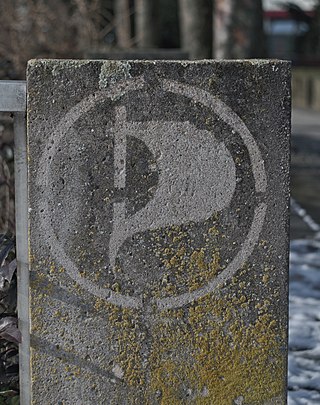
Steganography is the practice of representing information within another message or physical object, in such a manner that the presence of the information is not evident to human inspection. In computing/electronic contexts, a computer file, message, image, or video is concealed within another file, message, image, or video. The word steganography comes from Greek steganographia, which combines the words steganós, meaning "covered or concealed", and -graphia meaning "writing".
James McDonald Vicary was a market researcher who pioneered the concept of subliminal advertising with an experiment in 1957, later determined to have been fraudulent. Vicary was unable to ever reproduce the results of his experiments.

New Coke was the unofficial name of a reformulation of the soft drink Coca-Cola, introduced by The Coca-Cola Company in April, 1985. It was renamed Coke II in 1990, and discontinued in July 2002.

The Coca-Cola Company is an American multinational corporation founded in 1892. It produces Coca-Cola. The drink industry company also manufactures, sells, and markets other non-alcoholic beverage concentrates and syrups, and alcoholic beverages. The company's stock is listed on the NYSE and is part of the DJIA and the S&P 500 and S&P 100 indexes.
Kleptography is the study of stealing information securely and subliminally. The term was introduced by Adam Young and Moti Yung in the Proceedings of Advances in Cryptology – Crypto '96. Kleptography is a subfield of cryptovirology and is a natural extension of the theory of subliminal channels that was pioneered by Gus Simmons while at Sandia National Laboratory. A kleptographic backdoor is synonymously referred to as an asymmetric backdoor. Kleptography encompasses secure and covert communications through cryptosystems and cryptographic protocols. This is reminiscent of, but not the same as steganography that studies covert communications through graphics, video, digital audio data, and so forth.

"Fire on High" is the opening instrumental track from the 1975 Electric Light Orchestra (ELO) album Face the Music.

More Power to Ya is the fifth studio album of the Christian rock band, Petra. It was released in 1982. This was the first album to feature Louie Weaver as the official drummer. It also features the vocals of bassist Mark Kelly in the song "Disciple". The album climbed to number 3 on the Billboard Top Inspirational Albums chart.
"Snowblind" is a song by Styx that appears on the Paradise Theatre album released in 1981. The song is about the helplessness of cocaine addiction, alternating between slow, brooding verses and a faster, harder-edged chorus, representing the addict's cycle of highs and lows.

Dr Pepper is a carbonated soft drink. It was created in the 1880s by pharmacist Charles Alderton in Waco, Texas, and first served around 1885. Dr Pepper was first nationally marketed in the United States in 1904. It is now also sold in Europe, Asia, North and South America. In Australia, New Zealand and South Africa, Dr Pepper is sold as an imported good. Variants include Diet Dr Pepper and, beginning in the 2000s, a line of additional flavors.

Reverse graffiti is a method of creating temporary or semi-permanent images on walls or other surfaces by removing dirt from a surface. It can also be done by simply removing dirt with the fingertip from windows or other dirty surfaces, such as writing "wash me" on a dirty vehicle. Others, such as graffiti artist Moose, use a cloth or a high-power washer to remove dirt on a larger scale.
Phonetic reversal is the process of reversing the phonemes or phones of a word or phrase. When the reversal is identical to the original, the word or phrase is called a phonetic palindrome. Phonetic reversal is not entirely identical to backmasking, which is specifically the reversal of recorded sound. This is because pronunciation in speech causes a reversed diphthong to sound different in either direction, or differently articulate a consonant depending on where it lies in a word, hence creating an imperfect reversal.
Backmasking is a recording technique in which a message is recorded backward onto a track that is meant to be played forward. It is a deliberate process, whereas a message found through phonetic reversal may be unintentional.
Hail Satan, sometimes Latinized as Ave Satanas or Ave Satana, is an exclamation used by some Satanists to invoke the name of Satan in contexts ranging from sincere expression to comedy or satire. The Satanic Temple uses the phrase as a sincere expression of rational inquiry removed from supernaturalism and archaic tradition-based superstitions.
Product displacement is the removing of trademarked products from primarily visual media in order to avoid the payment of licensing fees, if the trademark owner objects, or if the broadcaster would prefer not to publicise a product for free, if the owners have not paid for it to be included in a programme.
While the effectiveness of subliminal messages is often overstated in popular culture, its history in television shows, movies, music and novels have long led many cultural idioms that persist today.
These are instances of subliminal messages that have led to controversy and occasionally legal allegations.
Subliminal stimuli are any sensory stimuli below an individual's threshold for conscious perception, in contrast to supraliminal stimuli.

The Pepsi Cool Cans are a series of promotional cola cans produced in 1990 with four different designs, as part of a PepsiCo advertising campaign. The designs passed into folklore, particularly the one titled Neon, due to the belief that the word SEX was hidden in that design.
"In League with Satan" is the first song released by the English extreme metal band Venom. It was released on 19 April 1981 as a single with the B-side "Live Like an Angel" by Neat Records and later appeared on the band's first album, Welcome to Hell. The song has been cited as the first black metal song and is also often cited by critics who claim a connection between heavy metal and Satanism.








